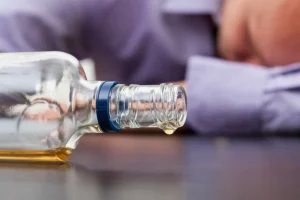The physical and mental health effects of alcohol Institute of Alcohol Studies
Just like with other diseases, sometimes you need multiple treatments or repeat treatments. People used to believe that addiction only happened in certain areas, like in inner cities, or among specific groups of people, like those who were down and out. But addictions can happen anywhere, from college campuses to rural and suburban towns. And anyone can become addicted, from people experiencing homelessness to business executives. The opioid crisis is so bad that the U.S. government declared a public health emergency. Speak with your doctor if you have become physically dependent on a medication or other substance.
What Are the Long-Term Effects of Alcohol Use?
Listen to relatives, friends or co-workers when they ask you to examine your drinking habits or to https://ecosoberhouse.com/ seek help. Such confusion can also contribute to a reluctance among prescribers to treat pain conditions among individuals on opioid agonist treatment. The researchers also identified altered levels of eicosanoids, a type of immune signaling molecule, in the dorsal root ganglia of female rats. Generally, these symptoms are short-lived, but they may worsen or lead to long-term complications.
Addiction and the Brain
- In female rats, alcohol has been shown to suppress the secretion of specific female reproductive hormones, thereby delaying the onset of puberty (see Dees et al. 2001 and Emanuele et al).
- This means that certain contextual cues (e.g., a unique odor or testing environment) will indicate to the animal that responding will pay off with delivery of alcohol reinforcement, whereas a different contextual cue is used to signal that responding will not result in access to alcohol.
- People who experience severe withdrawal symptoms or DTs may require hospitalization or intensive care unit (ICU) treatment during alcohol.
- While these factors alone do not mean your condition classifies as alcohol addiction, it can be a contributing factor if proper treatment is not sought.
- Additionally, chronic alcohol consumption has been shown to reduce total sleep time as well as quality 2.
- Activation of the HPA axis and CRF-related brain stress circuitry resulting from alcohol dependence likely contributes to amplified motivation to drink.
- The kudzu root extract appears to be beneficial in lowering alcohol consumption in heavy drinkers.
It also includes binge drinking — a pattern of drinking where a male has five or more drinks within two hours or a female has at least four drinks within two hours. Psychological alcohol dependence, known as alcohol addiction or alcohol use disorder (AUD). Different stressors likewise robustly reinstated extinguished alcohol-reinforced responding in different operant reinstatement models of relapse (Funk et al. 2005; Gehlert et al. 2007; Le et al. 2000, 2005; Liu and Weiss 2002b). This effect appears to involve CRF activity because CRF antagonists block stress-induced reinstatement of alcohol-seeking behavior (Gehlert et al. 2007; Le et al. 2000; Liu and Weiss 2002b).
Binge Drinking and Its Effects on Your Body
When the team examined the rats’ dorsal root ganglia, they found that alcohol withdrawal resulted in reduced levels of the endocannabinoid 2-AG in the heavier-drinking rats. Reduced levels of 2-AG were directly correlated with the rats’ levels of allodynia, making 2-AG metabolism a potential therapeutic target for treating allodynia. The separate notions of physical dependence and psychological dependence are artificial and represent a myth regarding addictive behaviors. This myth is actually detrimental to the understanding and treatment of any substance use disorder. However, this condition does not generally occur with withdrawal from opiate drugs, which are also considered to be extremely physically addicting. With regard to sex, although women with AUD enter treatment earlier in the course of the disease than men,133 clinical studies of pharmacologic AUD treatment tend to be comprised of mostly male patient populations.
- This is unique internationally, as most previous studies have explored the effects of alcohol use on limited types of health outcomes.
- While nalmefene may be superior to naltrexone in its ability to reduce alcohol cravings,48 and does not carry the same hepatotoxicity risk, its role in treating alcohol-dependent patients remains unclear.
- A meta-analysis of evidence from more than 50 studies that linked drinking habits and cardiovascular health for over 260,000 people found that ‘reducing the amount of alcoholic beverages consumed, even for light-to-moderate drinkers, may improve cardiovascular health, including a reduced risk of coronary heart disease’ 7.
- These findings underscore the need for interventions and alcohol controls as an important policy strategy for reducing alcohol use and to mitigate its harmful consequences among New Zealanders.
Tiagabine107 and pregabalin108 both have open-label trials supporting their potential usefulness in alcohol dependence; however, placebo-controlled and head-to-head trials are needed to ascertain their particular place in therapy. Although the leading causes of liver cancer are hepatitis B and C, excessive alcohol use can also increase your risk. Remember you are facing a difficult challenge during alcohol withdrawal, but you are not alone. There are many resources available to help, including peer support groups, counseling, therapy, and inpatient rehabilitation. However, try not to have too many firm expectations, as symptoms can continue for multiple weeks in some people.
- Full details of the study methods are published elsewhere 16 but are summarised here.
- The liver then effectively removes alcohol from the body by changing it to other compounds.
- These diseases disrupt liver function, causing serious damage to the body over time.
- Thus, alcohol not only disrupts the interaction between the brain, pituitary gland, and ovaries, it also directly impairs the regulatory systems within the ovaries (see Dees et al. 2001 for review).
- Perhaps the continued exploration of non-approved medications will result in the identification of a drug or combination of drugs that demonstrates generalized effectiveness in all AUD patient types.
Stress, Alcohol Craving, and Binge Alcohol Intake
In general, these were apartments within an apartment building with restricted access (see Figure 1). The median raphe nucleus is an area in the brain stem that contains a large proportion of the brain’s serotonin neurons and therefore significantly supplies the physiological dependence on alcohol brain with this important neurotransmitter. The autonomic nervous system is that division of the nervous system which regulates the functions of the internal organs and controls essential and involuntary bodily functions, such as respiration, blood pressure and heart rate, or digestion.
Adolescents tend to drink larger quantities on each drinking occasion than adults; this may in part be because adolescents are less sensitive to some of the unpleasant effects of intoxication. However, research suggests that adolescents may be more sensitive to some of alcohol’s harmful effects on brain function. Studies in rats found that alcohol impairs the ability of adolescent animals more than adult animals to learn a task that requires spatial memory.





